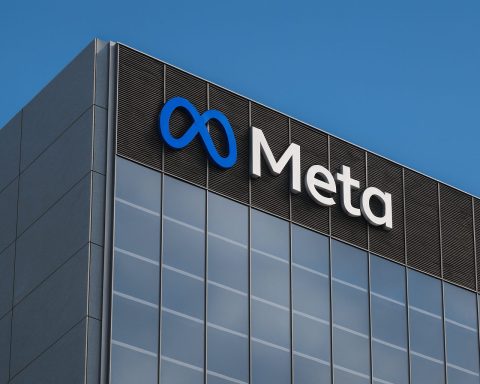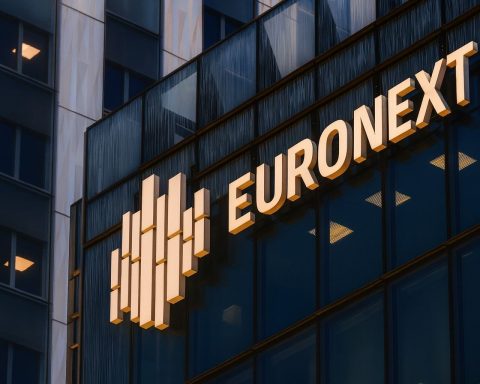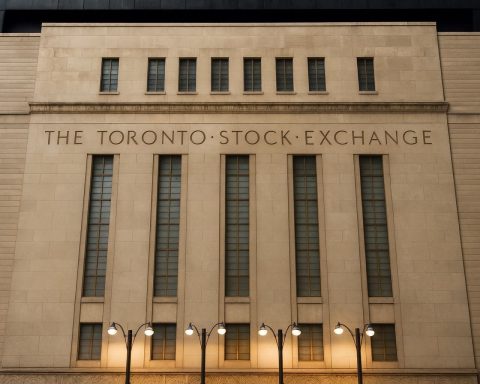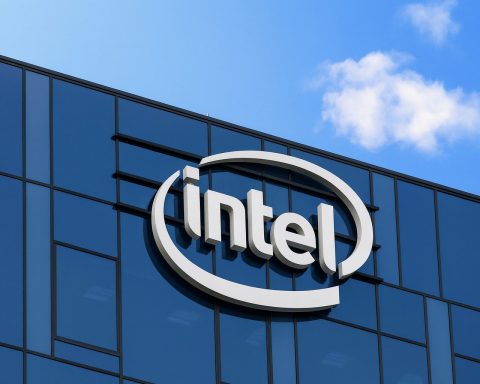- Klarna founder and OpenAI backer Sebastian Siemiatkowski says he is “very nervous” about trillion‑dollar bets on AI data centers and servers. [1]
- New analysis from Morgan Stanley today says global corporate AI spending could approach $3 trillion, with roughly half financed through public and private debt. [2]
- JPMorgan and DoubleLine now estimate that AI data‑center bonds alone could reach $1.5 trillion within five years, potentially exceeding 20% of the U.S. investment‑grade bond market. [3]
- Fresh data show that AI‑related investment may account for around half of U.S. GDP growth this year, making the economy unusually dependent on a single tech boom. [4]
- Critics warn of a “circular” AI economy powered by leveraged deals, lofty valuations and index‑fund flows, while others argue the boom is financing a genuine productivity revolution. [5]
1. A prominent AI insider hits the brakes
Sebastian Siemiatkowski is not a stereotypical AI skeptic. The Swedish entrepreneur co‑founded Klarna, the “buy now, pay later” fintech, and built it into one of Europe’s best‑known financial technology companies. [6]
Over the last three years, Klarna has also become a showcase for aggressive AI adoption:
- In early 2024, Klarna launched an OpenAI‑powered customer‑service assistant that now does the work of about 700 full‑time agents, handling roughly two‑thirds of all customer chats. [7]
- The company later said AI efficiencies allowed it to halve headcount since 2022 while still increasing average salaries for remaining staff. [8]
Siemiatkowski’s personal exposure to the boom is also deep. Through his family office, Flat Capital, he holds stakes in OpenAI and other cutting‑edge AI firms such as Perplexity, xAI and Cerebras. [9]
And yet, in an interview first reported by the Financial Times and echoed across tech and crypto media, he says he is “nervous” about the sheer size of today’s AI infrastructure build‑out. [10]
Summarising his concerns, secondary reports highlight that he:
- Questions whether it really makes sense to commit trillions of dollars to data centres and GPU clusters when AI models are getting more efficient over time. [11]
- Points to the combined $100‑plus billion that Alphabet, Amazon, Meta and Microsoft spent on capex in a single recent quarter as an example of possibly overshooting. [12]
- Notes that OpenAI has locked in well over $1 trillion worth of cloud and hardware deals for projects like the massive Stargate data‑center program. [13]
- Worries that index funds and pension savers are being pulled into the AI trade via huge positions in names like Nvidia, whether they realise it or not. [14]
Crucially, his critique is not that AI itself is a fad. The Klarna founder is betting heavily that AI will transform finance and consumer tech. His alarm is about how the boom is being financed, and whether the scale of infrastructure spending can ever be justified by future cash flows.
Today’s data suggests his timing may be uncomfortably on point.
2. 24 November 2025: a wall of AI money – and a wall of AI debt
On 24 November, several fresh reports landed that together sketch a stark picture of how big, and how leveraged, the AI build‑out has become.
$3 trillion in corporate AI spending
A note from Morgan Stanley today estimates that global corporate AI spending could approach $3 trillion, with roughly half of that needing to be financed through public and private credit markets. [15]
The bank expects AI‑related capex to contribute around 0.4 percentage points to U.S. GDP growth in 2026, on a forecast of 1.8% total growth – a sizable slice for a single technology theme. [16]
$1.5 trillion in AI data‑center bonds
Meanwhile, a Reuters report today highlights how quickly that spending is showing up in bond markets. According to JPMorgan estimates cited in the piece, AI data‑center bonds may reach $1.5 trillion over the next five years, potentially accounting for more than 20% of the entire U.S. investment‑grade corporate bond universe by 2030. [17]
Over just the past two months:
- Alphabet sold about $25 billion in bonds
- Meta issued $30 billion
- Oracle raised $18 billion
- Amazon followed with a $15 billion deal
Almost all of this funding is earmarked for AI‑ready data centres and networking gear, not traditional cloud or e‑commerce investments. [18]
Bond giant DoubleLine told Reuters it is wary of adding more of this AI‑linked debt, warning that a rush of issuance from a still‑unproven sector could “re‑lever” the investment‑grade market and change its risk profile. [19]
AI as the backbone of current U.S. growth
In a Wall Street Journal analysis shared via India’s Mint today, economists estimate that AI‑related spending on software, equipment and data centres added about 0.8 percentage points to U.S. GDP growth in the first half of 2025. Overall GDP grew at a 1.6% annualised pace, meaning roughly half of growth may have come from AI investment alone. [20]
Bank of America figures cited in the same piece suggest that Microsoft, Amazon, Alphabet and Meta will collectively spend about $344 billion on capital expenditures this year, up from $228 billion in 2024, with AI the main driver. [21]
Other forecasts underline the trend:
- Gartner projects total AI spending of nearly $1.5 trillion in 2025, across software, services and infrastructure. [22]
- Industry analysis puts potential AI data‑center infrastructure spending between $3 trillion and $8 trillion by 2030, depending on assumptions about model size and chip pricing. [23]
In short: the world is spending enormous sums to build AI capability – and increasingly borrowing to do it.
3. Complex financing structures: from Stargate to Hyperion
The Klarna founder’s worries are not just about headline numbers. They’re also about the elaborate financial engineering now wrapped around AI projects.
Stargate: a $500 billion infrastructure moonshot
The most visible symbol is the Stargate Project, a joint venture between OpenAI, SoftBank, Oracle and other partners that plans to invest up to $500 billion in AI infrastructure in the U.S. by 2029. [24]
To get there, Stargate and its associated data‑center ventures are tapping every major capital source:
- Multi‑billion‑dollar project‑finance loans from consortia of global banks for new data‑centre campuses in states like New Mexico and Texas. [25]
- Equity injections from investors such as Blue Owl Capital, which recently committed around $3 billion to the flagship New Mexico site. [26]
- Massive long‑term cloud‑capacity contracts – for example, OpenAI’s multi‑hundred‑billion‑dollar commitment to run workloads on Oracle Cloud – that effectively securitise future compute demand. [27]
Siemiatkowski’s point is that if future AI models become far more compute‑efficient, some of this locked‑in spending could end up looking like over‑built fibre‑optic networks after the dot‑com crash. [28]
Meta’s Hyperion and off‑balance‑sheet tricks
Elsewhere, Meta Platforms is building the $27‑billion “Hyperion” AI data centre in Louisiana using a joint‑venture and lease structure that keeps most of the debt off its own balance sheet, according to recent reporting. Large asset managers including Pimco are buying the bonds, while Meta has a long‑term lease and guarantees that could still leave it on the hook if things go wrong. [29]
Critics argue that these structures resemble the special‑purpose vehicles and off‑balance‑sheet leases that proliferated before the 2008 financial crisis, masking leverage and shifting risk from tech companies to bondholders, insurers and pension funds. [30]
4. Are we in an AI bubble?
Siemiatkowski is not alone in wondering whether the AI economy is becoming dangerously circular and leveraged.
The “circular deals” problem
An in‑depth piece on Built In this month describes how OpenAI has signed around $1 trillion worth of deals in 2025 alone, while AI funding now makes up nearly half of all global venture investment. The article warns that big players are increasingly passing money and capacity back and forth among themselves – raising the risk that valuations are being inflated inside a closed loop. [31]
MR Online, republishing an analysis from People’s Democracy today, takes that argument further. It describes an ecosystem where:
- Hyperscalers spend hundreds of billions on GPUs and data centres
- AI labs raise money based on their access to those GPUs
- Those same labs rent cloud capacity back from the hyperscalers
- Chipmaker Nvidia both supplies the hardware and invests in key customers, helping to sustain demand for its own products
The result, the article argues, is a self‑reinforcing loop in which spending, valuations and hype feed each other – one that only works as long as ever‑larger amounts of capital keep flowing in. [32]
Debt, accounting and pensions
Both MR Online and today’s Reuters and Morgan Stanley notes highlight another pattern: rising leverage and creative accounting. [33]
- Companies are stretching asset‑lifespan assumptions for expensive AI chips, which flatters earnings even as actual cash outflows surge. [34]
- Big Tech firms that could afford to pay cash are still selling bonds at scale, in part to preserve cash for share buybacks and acquisitions. [35]
- And because AI giants dominate major indexes, passive investors – including pension funds and retirement savers – are being pulled into the trade regardless of their personal risk appetite, a dynamic Siemiatkowski explicitly worries about. [36]
Add in prominent bears like Michael Burry, who has reportedly bet against Nvidia and Palantir while warning that markets have detached from fundamentals, and the “AI bubble” narrative is gaining traction well beyond fringe corners of the internet. [37]
The case for “boom, not bubble”
Not everyone agrees this is 1999 all over again.
- Morgan Stanley, despite highlighting credit risks, argues that corporate balance sheets are starting from a strong position, with high cash levels and relatively low leverage, and says it does not expect a systemic credit event in 2026 if AI returns disappoint. [38]
- Wall Street economists note that AI investment is producing real, tangible assets – data centres, power infrastructure and chips – rather than just eyeballs and banner ads, as in the dot‑com era. [39]
- Pro‑AI commentators point out that foundational models are already being embedded into productivity tools, search, design software, call centres and logistics, suggesting a broad diffusion of value over time. [40]
In this view, the AI build‑out could rhyme with earlier bubbles – railways, electrification, the internet – where excess investment and speculation eventually gave way to genuine, long‑run gains.
5. Klarna’s pivot: from AI evangelist to cautious realist
Because of his own track record, Siemiatkowski’s shift in tone is especially striking.
From “AI can do all the jobs”…
Over the past two years he has frequently touted AI as a workforce‑transforming force inside Klarna:
- In late 2024 he told Bloomberg that AI meant the company could “stop hiring” and that AI could “do all of the jobs” humans do inside the firm – comments widely shared and debated. [41]
- Klarna’s own press releases emphasised that its AI assistant was allowing the company to freeze hiring while dramatically improving productivity metrics like response time and revenue per employee. [42]
…to worrying about layoffs and loan risk
Yet more recently, he has sounded more cautious – even on the social fallout from the very trends Klarna helped pioneer.
In an appearance on Fox Business last week, he warned that AI‑related layoffs among white‑collar workers could hurt the “prime” borrowers that Klarna and other lenders rely on, potentially increasing credit risk in consumer‑finance portfolios. [43]
The company’s record Q3 results, announced on 18 November, show how big a role AI now plays in its operating model: revenue is up strongly while operating expenses have barely risen since 2022, and management explicitly credits AI for tripling revenue per employee. [44]
That puts Siemiatkowski in a unique position: he is personally profiting from AI’s efficiencies, yet publicly warning that the macro‑scale version of the same story – trillions in capex and mass automation – could backfire if not handled carefully.
6. What today’s AI spending surge means for everyone else
Whether you’re an investor, policymaker, employee or just someone whose pension tracks the S&P 500, today’s AI‑spending headlines matter.
For investors
- Credit risk is shifting: A growing share of AI risk is migrating from equity markets into bond portfolios and private‑credit funds via data‑center loans and off‑balance‑sheet vehicles. [45]
- Concentration is intense: A handful of mega‑cap names – Nvidia, Microsoft, Alphabet, Amazon, Meta and Oracle – sit at the centre of the web of deals, meaning sentiment around AI can move entire indexes. [46]
- Returns may be lumpy: Even bullish analysts concede that if productivity gains arrive more slowly than expected, markets could see years of sideways or volatile returns while balance sheets digest the current capex wave. [47]
(Not investment advice – just a snapshot of how analysts and institutions are framing the issue as of 24 November 2025.)
For workers and households
- AI roll‑outs like Klarna’s show how quickly entire job categories can be reshaped. Customer‑service headcount at the company is down sharply, even as digital‑banking revenue hits records. [48]
- At the same time, rising AI‑linked stock prices and bond issuance are helping to prop up household wealth and retirement accounts, especially in the U.S. – which is part of what worries Siemiatkowski if the boom stalls. [49]
For policymakers and regulators
Today’s stories underscore that AI is no longer just a tech‑sector issue:
- AI capex is now a major macro lever, potentially making the U.S. economy more sensitive to shifts in one industry’s investment cycle. [50]
- Regulators will likely face tougher questions about disclosure of AI‑related risks, accounting for data‑centre assets and the use of special‑purpose entities in tech financing. [51]
- Energy and climate agencies must grapple with the electricity demand of AI, which is already straining grids in several U.S. regions. [52]
7. The bottom line: sober optimism or early warning?
On 17 November, when Siemiatkowski’s comments first surfaced, they sounded like a contrarian note from a single high‑profile insider. [53]
By 24 November, set against:
- $3 trillion projected corporate AI spend,
- $1.5 trillion in potential AI bond issuance, and
- evidence that roughly half of recent U.S. growth is leaning on AI projects, [54]
his fears no longer look isolated.
Whether the AI era ultimately resembles the internet boom (a painful but ultimately transformative bubble) or something more severe depends on factors that are only partly technological: capital discipline, regulation, energy policy and how broadly the gains from AI are shared.
For now, one thing is clear from today’s news flow: the world is already living inside the AI bet that Siemiatkowski is nervous about. Unwinding it – or making sure it pays off – is becoming a central economic question of the next decade.
References
1. longbridge.com, 2. ca.investing.com, 3. www.reuters.com, 4. www.livemint.com, 5. mronline.org, 6. en.wikipedia.org, 7. www.klarna.com, 8. www.theguardian.com, 9. longbridge.com, 10. www.ft.com, 11. longbridge.com, 12. longbridge.com, 13. builtin.com, 14. longbridge.com, 15. ca.investing.com, 16. ca.investing.com, 17. www.reuters.com, 18. www.reuters.com, 19. www.reuters.com, 20. www.livemint.com, 21. www.livemint.com, 22. www.gartner.com, 23. www.fool.com, 24. en.wikipedia.org, 25. www.reuters.com, 26. www.theinformation.com, 27. www.theregister.com, 28. longbridge.com, 29. www.wsj.com, 30. mronline.org, 31. builtin.com, 32. mronline.org, 33. mronline.org, 34. mronline.org, 35. www.reuters.com, 36. longbridge.com, 37. cybernews.com, 38. ca.investing.com, 39. www.livemint.com, 40. www.aicerts.ai, 41. fortune.com, 42. www.klarna.com, 43. www.foxbusiness.com, 44. www.klarna.com, 45. www.reuters.com, 46. douglevin.substack.com, 47. ca.investing.com, 48. www.theguardian.com, 49. www.livemint.com, 50. www.livemint.com, 51. mronline.org, 52. mronline.org, 53. www.ft.com, 54. ca.investing.com










